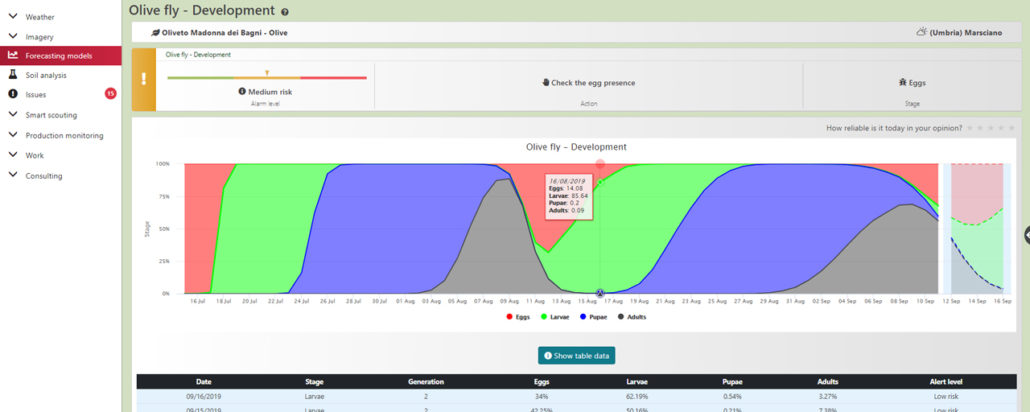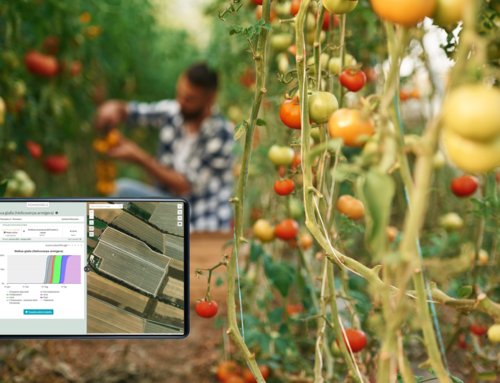Identifying the right strategy to fight the olive fruit fly (Bactrocera oleae) is crucial for olive growers.
In fact, the infestation of the fruit can lead to a decrease in production and a drastic reduction of the oil quality during years characterized by climatic trends favorable to the insect.
Agriculture 4.0 tools such as forecast models play the main role in fighting the fly.
By consulting and analyzing them it is possible to plan in advance, during the production season, the strategies to be undertaken both in conventional and organic farming and in field monitoring activities.
But what types of models we have? And, above all, what are the concrete advantages of their use?
Here are those available in OLIWES, the solution powered by Agricolus for an efficient and innovative management of the olive grove.
Mortality model: how it works and which are the advantages
The model calculates the daily juvenile mortality (eggs, larvae and pupae) caused by adverse environmental conditions: immature forms of fly are in fact very sensitive to the high temperatures that can occur during summer months.
The model calculates the daily mortality based on weather data obtained by the station. Moreover, this output is weekly cumulated to assess the environmental contribute in controlling the population of the pest.
The knowledge of the mortality rate can provide useful information on the percentage of population dying from “natural causes” and save control treatment if infestation levels are close to threshold ones.
Development model: how it works and which are the benefits
The model simulates the olive fruit fly generations that, being a multivoltine species, presents a variable number of generations depending on the thermal conditions of the specific period of interest.

Development model of olive fruit in OLIWES
Moreover, the distribution of the insect population among the different developmental stages (egg, larvae, pupae, adults) is daily calculated using temperature data obtained through the specific weather station.
This model allows the user to plan field activities and the best defense strategies, both preventive adulticide (prevalence of adults) and curative larvicide (prevalence of eggs and larvae).
OLIWES’ features such as forecast models, connection to automatic traps, smart scouting and task management are able to help olive growers to fight this insect at the right time to make the treatment more effective and to manage efficiently the olive grove.






